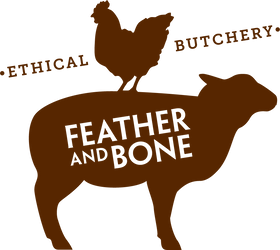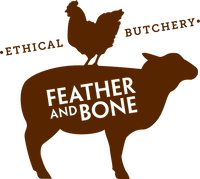South Hill Rose Angus veal
South Hill Wildes Meadow rose angus veal
We're very pleased to have this back on the list again. This is partly because Alan and Clara Bateman produce such delicious veal but also because we know that the reason it tastes so good is because they are such exacting and compassionate farmers. Our favourites are slow cooked neck or shoulder and grilled cutlets.
Here are a couple of extracts from pieces written by Clara Bateman describing their farming practice.
About the soil
'We're constantly striving to improve our soil health. Contrary to what a lot of people on the land think, the wealth of your property is not what's on TOP of the ground, it's what's IN the ground. If your soils are truly functioning, living systems, what they produce will be fantastically good for the plants that grow in them and the animals that feed off those plants.
Every mouthful of grass the cattle eat on this property contains the minerals they need to allow their systems to function optimally. Which means the beef they produce contains those same properties and is much more easily assimilated for humans than through, for example, a daily vitamin pill... By carefully monitoring our pasture and cattle every day and noticing every detail we're able to understand much of what's happening with the soil so we can keep on top of soil health.
The first breeding cattle purchase we made back in 1998 arrived with all of them looking like they had slightly bad perms and, for so-called black Angus, they looked pretty brown to my inexperienced eye. 'It's just because they've come off red soil country', the stock and station agent told me. No, actually it was because they were all copper deficient as I learned from a careful read of Pat Coleby. And until we had our soils tested and found out how much we needed to put out as a foliar spray and until our soil started functioning better, we gave the cattle copper supplements.
Lo and behold within about 3 weeks they had all gone to the hairdressers, had their perms straightened and their hides tinted shiny black! It really was that fast.
So to sum up, if your soil is not in good health, nothing that comes from it will be any good either.'
About the calves
- All breeding cows have identification tags in their ears so the link between cow and calf is always clear.
- Calving cows are checked morning, lunch and evening.
- Each new calf is tagged with the birth date, mother's ID and calf ID number. This allows us to ensure who belongs to whom in case of a calf becoming ill or injured and needing care which would necessitate it and its mum being separated from the herd while treatment takes place. We always try to bring another cow and calf in at the same time so that the mothers don't suffer stress from being separated from the rest of the herd.
- Calves due for slaughter are separated off from the herd with their mothers and kept in our dispatching yards for three days before they go. They and their mothers are fed good quality hay and the yards are well-shaded in summer and protected from the wind.
- Calves go to slaughter in twos or threes and always with calves they have been running with for at least a month because, like people, cattle don't like being shut up in confined spaces with others they don't know well.
- We are fortunate to live only 40 minutes from our abattoir at Picton. We've built up a very good relationship with the abattoir and our vealers are transported at 5.30 am and slaughtered immediately they arrive at the abattoir so the stress is kept to the lowest minimum possible.
- We keep very careful records and we can guarantee that none of the vealers is under 4 months old. We believe that at that age they have become emotionally independent from their mothers, although of course they are still feeding 3 times a day.
Photograph by Alan Benson




Leave a comment